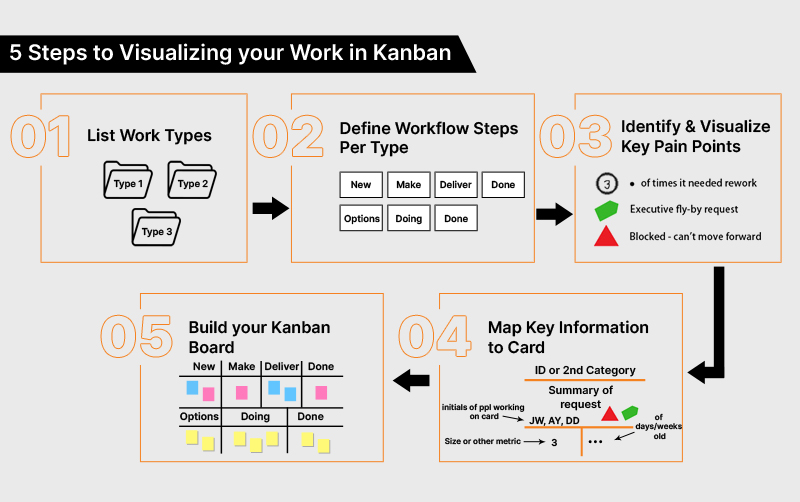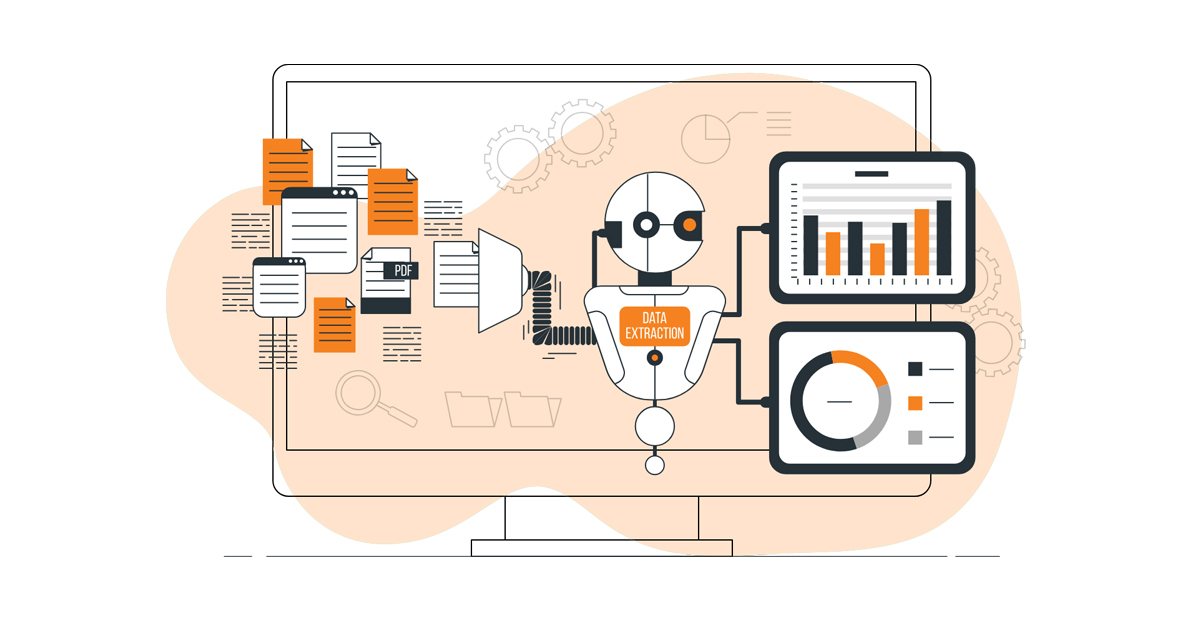So you made the decision to build software for your business. What are the items you require right now? A bunch of toolkits? Advanced technology? Both are right.
However, having a team that shares your vision and comprehends it is one of the most essential aspects. The waterfall methodology has been utilized for managing the team members and the workflow for many years.
However, as technology has developed, agile methodology has become more and more well-liked and acknowledged. Moreover, several approaches, including SCRUM, Kanban, and extreme programming, have emerged underneath the banner of agile project management. All these have their own set of benefits in software development.
And today in this article we have discussed the kanban methodology and how you can use it to manage your software development cycle effectively.
What is Kanban in Software Development?
Software development using the Kanban technique breaks down an undertaking project into smaller, more manageable chunks. Teams working on agile development value this method of managing projects.
Toyota, a Japanese automobile manufacturer, was the first company to employ the Kanban system in the 1940s. Staff in the Toyota workplace would therefore transfer cards through various sections to relay changes in operations in a timely manner.
Afterward, in 2004, David J. Anderson used this approach from the automobile sector to the software industry. Microsoft was the company that originally used Kanban, and today, IT companies all around the world use it.
What is a Kanban Board?
A Kanban board is a simple tool for managing and visualizing operations. It has columns that reflect different phases of a procedure and can be either physical or virtual. As activities and projects go through the phases, they are tracked using cards.
What is a Kanban Card?
Every one of the cards that make up the kanban board, also known as work items, symbolizes a distinct assignment. Every kanban card contains details on the work, including its title and a brief explanation. Additionally, these would be given to the co-worker who is going to be in charge of completing the assignment by the due date.
Each Kanban card contains information such as:
- Who is accountable?
- What is the topic of the work with an explanation?
- When is the task expected to be completed?
- What other actions in the process are this card dependent upon?
- Photos, movies, and more material as attachments.
4 Core Principles of Kanban

1. Visualization
Whenever you picture your task, you may spot current and possible problems that can affect the outcomes of your software development. It identifies both real and potential obstacles.
2. Limit
Restricting work in the Kanban approach refers to a team finishing off all open tasks and ongoing projects before starting a new one. Why? Low-efficiency results from balancing many unfinished jobs since it requires a lot of extra intellectual work from your teammates.
3. Optimization
Optimized data is essential to solving current and future problems. As a general rule, a Kanban board generates statistics and indications by gathering and reviewing every piece of data in the procedure.
4. Improvement
An information-driven agile technique called kanban enables you to try many options to find the ones that work best for a given issue, allowing you to continuously improve your procedures.
Core Practices of Kanban Methodology
Enterprises that employ the Kanban approach have also built the following practices utilizing the aforementioned principles.
1. Initial workflow visualization
A comprehensive project’s visual representation is key to the Kanban philosophy. All across the market, technology for Kanban boards is employed for this. A board with wheels was formerly popular, and users would organize their work using multiple columns with Kanban cards. This approach has now been made useless by the market’s accessibility to improved management software, which will considerably simplify your work.
2. WIP (Work in Progress limits)
When using a Kanban system, WIP should be in line with the team’s capacity. WIP is often capped in to ensure optimal effectiveness. There is a limit to how many of operations may be carried out simultaneously on the Kanban board.
As soon as the limitation is reached, no new activities can be assigned, ensuring the entire team collaborates and fulfills all relevant tasks simultaneously.
3. Effective project management
Lead time, or the total amount of time needed to execute a work, is a crucial metric that development teams should decrease as much as feasible.
4. Clearly stated management guidelines
The development team must understand your goals if they want to succeed. The explanation is fairly straightforward: People will work better to complete a task when they have a clear objective set before them.
5. Integrating feedback loops
The Kanban technique places a high value on feedback loops, which may be used to assess both the task you’re performing and the Kanban approach as a whole. Receiving feedback on the final version makes certain that subsequent work that passes through the process will be significantly more valuable and efficient.
How does the Kanban Method work?

Regardless of whether it’s displayed practically on a board or remotely via applications, the Kanban board serves as the primary tool for Kanban teams. Understanding the workflow of the project tasks inside the software development team is the primary goal. Along with helping teams understand workflow phases, the board shows them where blockages are caused by tasks accumulating. Developers set distinct Kanban cards upon the Kanban board in order to demonstrate the number of tasks and procedures. The ability to trace an activity as it moves through the process is made possible by the cards.
Benefits of using Kanban methodology in Software Development
Kanban is a terrific, adaptable method that may assist organizations in balancing workload with available team members. Kanban, when used properly, can:
- Give a quick overview of the work done by your team. Additionally, this will assist you in giving projects life and gaining a clear understanding of the group’s operations.
- Clarify communications, particularly for distributed teams. It may be challenging to comprehend what the team is doing if they are all working from home. Kanban boards may assist you and your colleagues in gaining immediate visibility into who is doing what by organizing work and minimizing the quantity of work that is in flow at any given point of time.
- Enterprises Teams that adopt the Kanban model may gradually are becoming more adaptable and dynamic since it is based on the idea of constant improvement. The team might become much more agile and adaptable if you adhere to the four guiding principles of Kanban that we mentioned above.
- Cycle time is an important indicator in Kanban that your development teams will encounter. Cycle time is the duration that it takes for a team to complete the process. The kanban methodology can shorten this cycle significantly. Shortened time cycles have several advantages, but you should maximize them to improve the accuracy of your delivery predictions.
Downsides of Kanban
Every team won’t benefit from using the kanban framework. The following are some Kanban drawbacks:
- Teams that are not programmers are less likely to use it. Kanban is less widely recognized within non-programming teams than Scrum and Agile methods. To speed up the successful adoption of your enterprise, think about transforming workstreams one by one.
- It may easily become too much. The Kanban board may easily become congested and daunting if you are carrying too many tasks in progress simultaneously since each task card occupies so much visible space.
Is the Kanban Methodology a Good Fit for your Enterprise?
Kanban’s convenience is what gives it so much flexibility. It maintains the present tasks and duties and integrates them with the current workflows. Regardless of the industry, Kanban is applicable.
Enterprises, scale-ups, and even startups may also use it.
Any information work environment may benefit from the usage of Kanban, but it is especially useful when work comes in infrequently or when you wish to start deploying work right away instead of waiting for some other tasks to finish. Kanban is the ultimate choice if your goals may change and activities might occur at any moment since you can add activities to every point in the process.
2 Kanban Tips from Netsmartz to Enhance Workflow
1. Examine the productivity
You might be curious about the amount of work you’re producing at a particular time. Count the total number of finished tasks to determine performance.
2. Move past “to-do,” “doing,” and “done”
Newcomers frequently utilize the basic headings To Do, Doing, and Done on the list. But, a true Kanban board specifies which stages truly contribute value to the Workflow. So stop using such a simple procedure. Your project, group, and objectives are unique. So your procedures ought to be distinct as well. This is the way you eventually overtake by operating as a cohesive team that’s also quicker and better.
Wrapping Up
Despite being an excellent approach for applying Agile ideas, Kanban has certain limitations. You may take advantage of every feature of Kanban software development with Netsmartz since we effectively combine agile frameworks and delve into your requirements and structures to deliver results.
Hire skilled, dedicated developers at Netsmartz for software development to streamline your software development process and get desired results.
Summary
Kickstart Your Project With Us!
Popular Posts
CONTACT US
Let's Build Your Agile Team.
Experience Netsmartz for 40 hours - No Cost, No Obligation.
Connect With Us Today!
Please fill out the form or send us an email to







